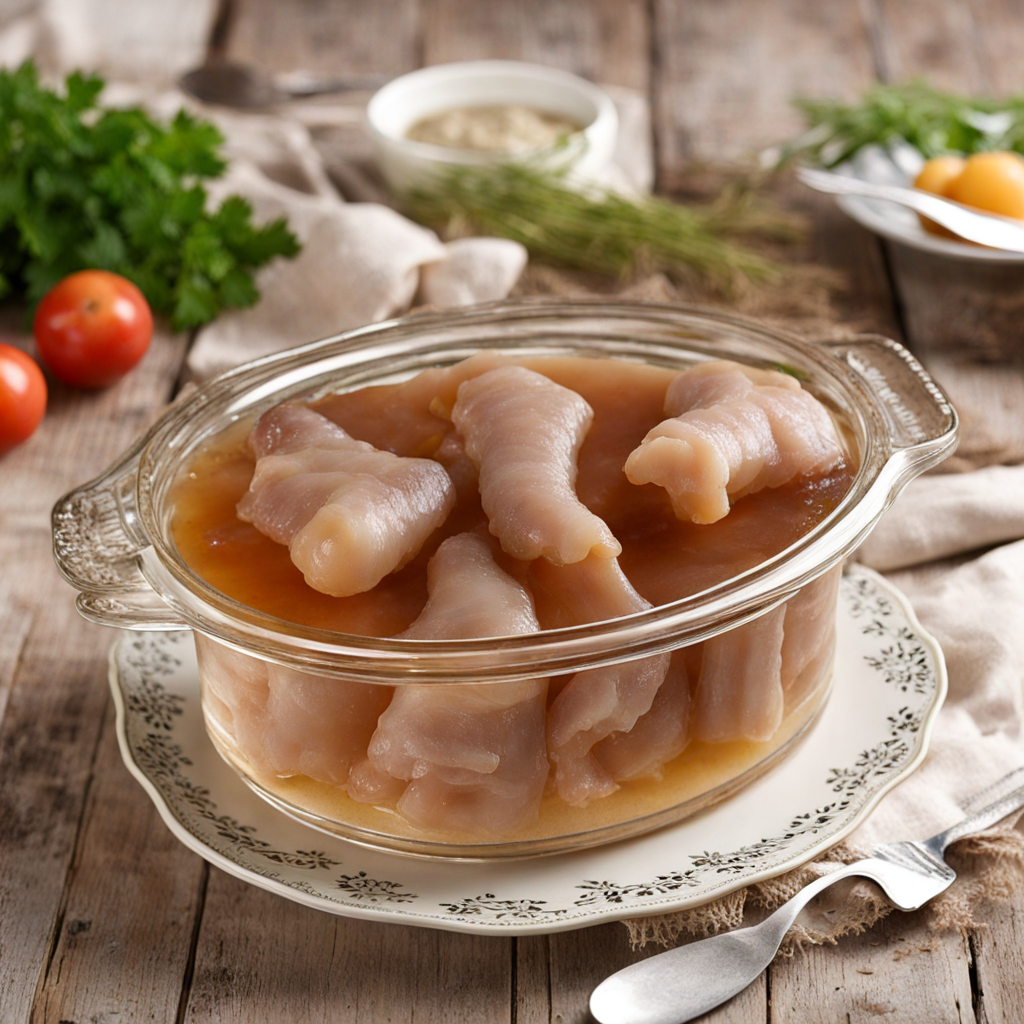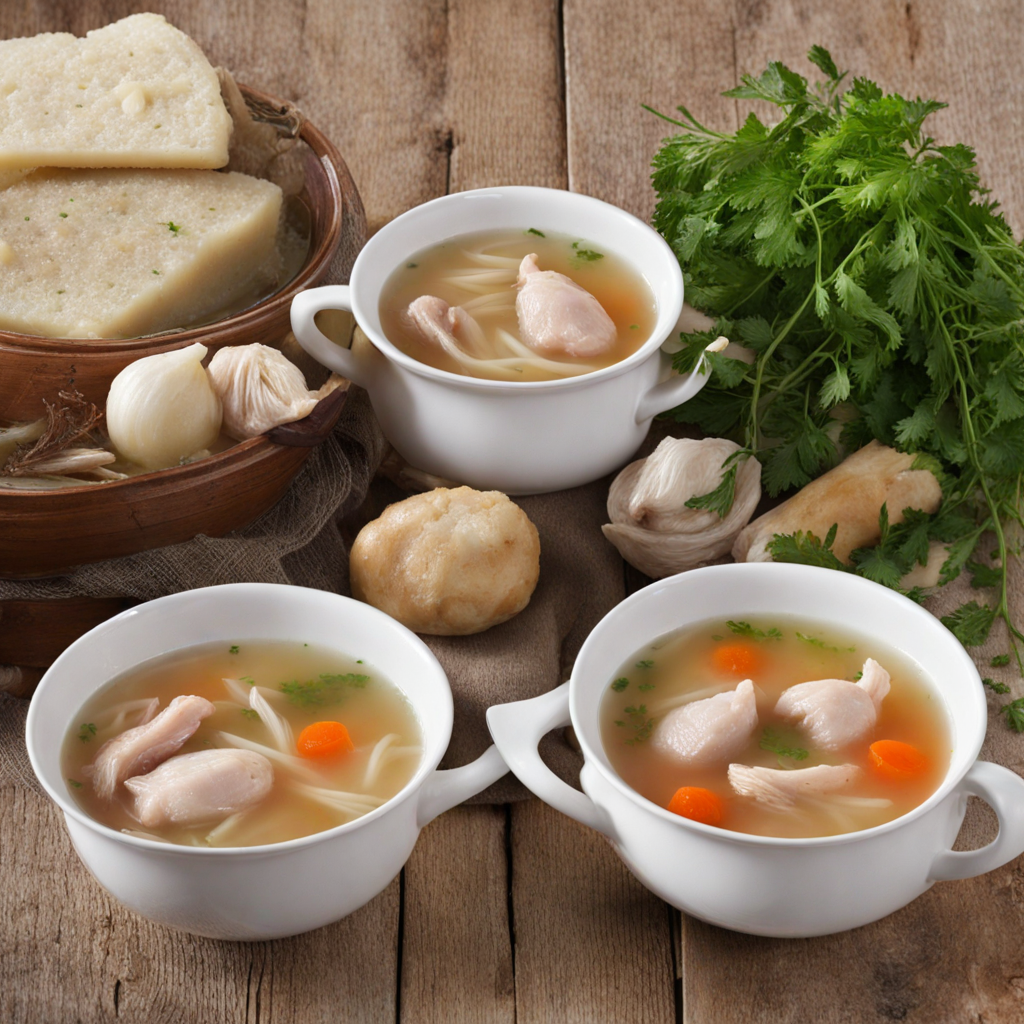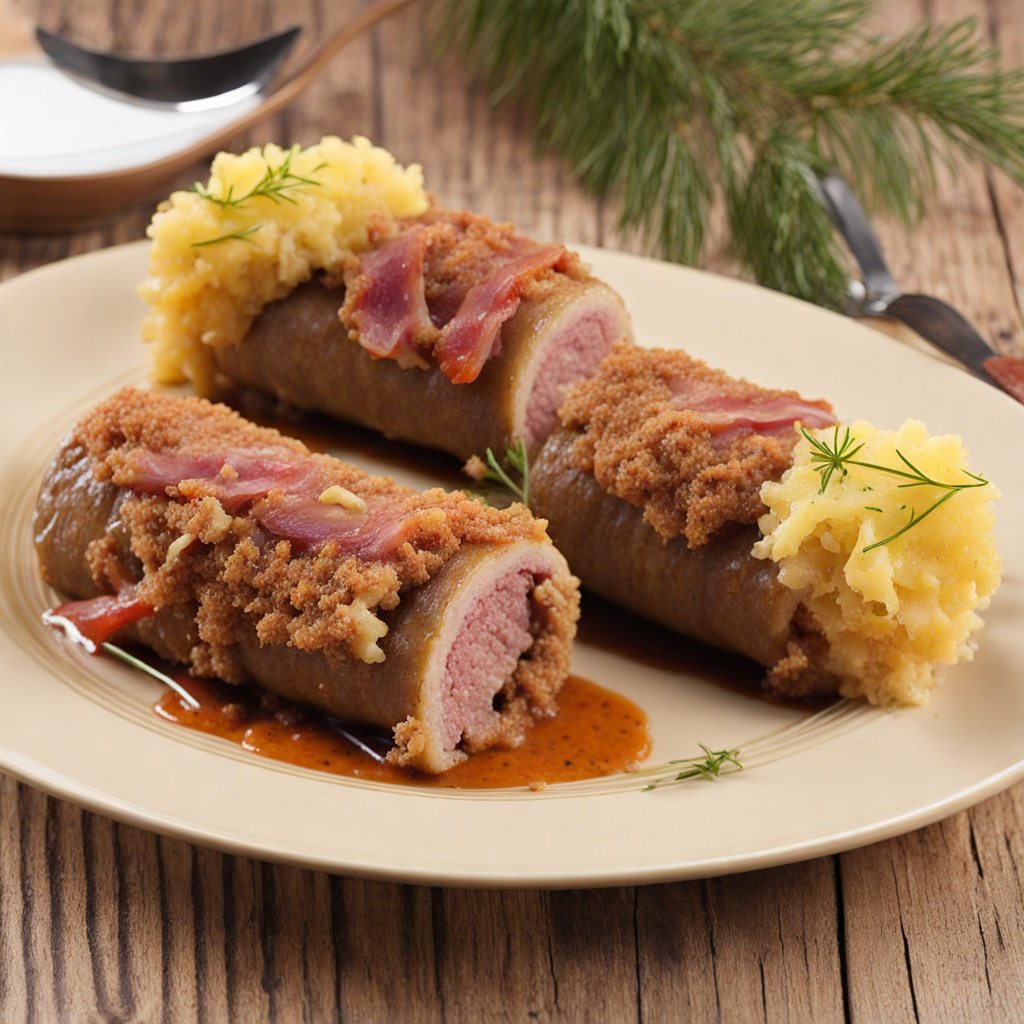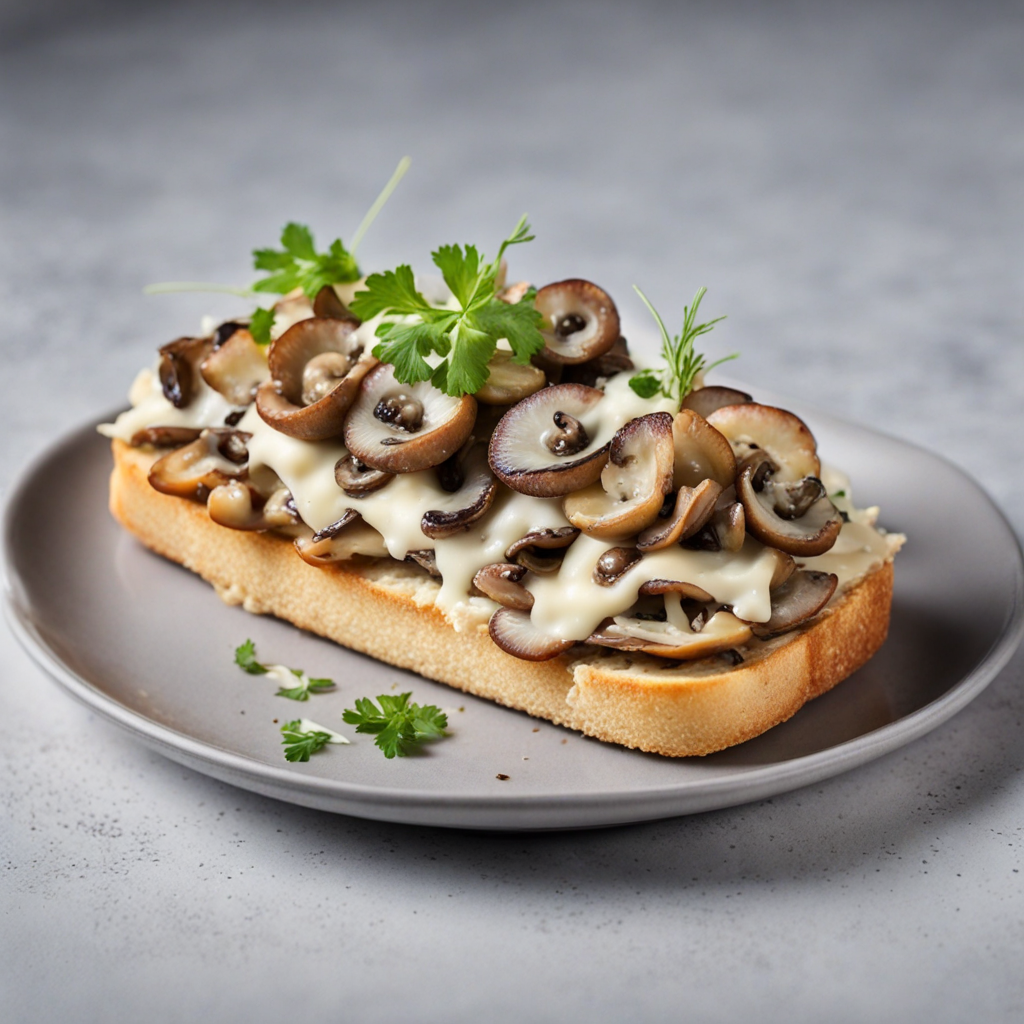Galareta
Galareta, a traditional Polish dish, is a delightful culinary experience that showcases the country's rich gastronomic heritage. This savory jelly is made by simmering meat, often pork or beef, along with bones and various seasonings, which helps to extract the natural gelatin. Once the mixture has simmered for several hours, it is strained and allowed to cool, resulting in a flavorful gelatinous substance that captures the essence of the meat. The dish is typically accompanied by vegetables such as carrots, peas, and sometimes even hard-boiled eggs, which add a lovely contrast in texture and color. The presentation of Galareta is as important as its taste. Once set, it is cut into appealing cubes or slices, revealing the vibrant hues of the embedded ingredients. Each bite delivers a satisfying combination of the tender meat and the subtly seasoned jelly, creating a unique mouthfeel that is both rich and refreshing. Often served chilled, Galareta is a popular choice for festive occasions and family gatherings, where it can be enjoyed as an appetizer or a main dish. Many people like to pair it with a tangy horseradish sauce or a vinegar-based dip, which elevates the flavors and adds a zesty kick. For those looking to explore new tastes, Galareta offers a unique blend of textures and flavors that are deeply rooted in Polish culture. The dish's ability to adapt to various ingredients means that each family may have its own cherished recipe, making it a personal and communal experience. Whether enjoyed at a bustling Polish market or in the comfort of a home kitchen, Galareta promises a taste adventure that is both satisfying and memorable, inviting food lovers to discover the heart of Polish cuisine.
How It Became This Dish
Galareta: A Culinary Journey Through Polish Tradition In the heart of Eastern Europe lies Poland, a country rich in history and culture, where culinary traditions are deeply intertwined with the fabric of everyday life. Among these culinary treasures is Galareta, a dish that has captivated palates for generations. Rooted in medieval times, this gelatinous preparation of meats is not merely a dish but a cultural emblem, reflecting the resourcefulness of Polish cuisine and the country’s historical narrative. Origins of Galareta The origins of Galareta can be traced back to the Middle Ages, a time when meat preservation was a crucial aspect of survival. The use of gelatinous substances to preserve meats was common across Europe, owing to the lack of refrigeration. In Poland, the technique of boiling meat to extract collagen, which would later solidify into a jelly-like form, became a practical method of extending the shelf life of leftovers. This not only minimized waste but also provided a nourishing dish that could sustain families during harsh winters. Initially, Galareta was prepared primarily from the less desirable cuts of meat, such as trotters, tails, and snouts, which were often overlooked in more affluent households. By utilizing these parts, Polish cooks showcased their ingenuity and ability to transform humble ingredients into something both delicious and visually appealing. This practice mirrored the broader culinary trends of the time, where peasant foods became elevated through the art of cooking and presentation. Cultural Significance Galareta is more than just a dish; it is a symbol of Polish hospitality and family gatherings. Traditionally served during festive occasions and holidays, particularly Christmas and Easter, Galareta embodies the spirit of sharing and togetherness. Families often gather to prepare the dish, passing down recipes and techniques through generations. It is common for different regions of Poland to have their variations of Galareta, each adding a local twist to the basic recipe. The dish is usually presented as a centerpiece, its translucent appearance adorned with colorful vegetables and herbs, making it an eye-catching addition to any feast. The preparation of Galareta is often accompanied by ritualistic elements, such as the sharing of stories and memories, reinforcing familial bonds. It acts as a conversation starter, a way to connect with the past, and a way to honor ancestors who, through their culinary practices, have shaped modern Polish cuisine. Evolution Over Time As Poland underwent significant political and social changes, so too did the role and preparation of Galareta. In the 19th century, with the rise of the bourgeoisie, there was a shift in culinary preferences. The upper classes began to embrace the dish as a delicacy, often serving it at banquets and formal gatherings. This shift in perception transformed Galareta from a peasant food into a gourmet offering. Chefs began to refine their techniques, focusing on aesthetics and presentation, which elevated the dish's status. The introduction of gelatin, derived from animal collagen, in the late 19th century further revolutionized the preparation of Galareta. This innovation allowed for a more consistent texture and clarity, making it easier to mold into intricate shapes and designs. Recipes began to incorporate a wider variety of ingredients, including seafood, poultry, and even vegetables, reflecting evolving tastes and the influence of international culinary trends. By the 20th century, Galareta became a staple at Polish weddings and family gatherings, symbolizing abundance and prosperity. Its presence at these events was seen as a mark of social status and culinary prowess. The dish also found its way into cafes and restaurants, where it continued to be a favorite among patrons seeking an authentic taste of Polish tradition. Modern Interpretations In contemporary Poland, Galareta remains a beloved dish, though its preparation has adapted to modern tastes and lifestyles. With the increasing emphasis on health and wellness, many cooks are now focusing on using high-quality, organic ingredients, often opting for free-range meats and locally sourced vegetables. The tradition of making Galareta is still cherished, with families coming together during holiday seasons to prepare the dish, ensuring that the age-old recipe is preserved. Moreover, Galareta has transcended borders, finding a place in the hearts and kitchens of Polish communities around the world. Polish immigrants have carried this dish to various countries, where it has been embraced by diverse audiences. In the United States, for instance, it is often featured at Polish-American festivals and gatherings, showcasing the resilience of cultural identity through food. In recent years, chefs in Poland have begun experimenting with Galareta, incorporating modern culinary techniques and flavors. Contemporary versions may include innovative ingredients such as truffle oil, infused broths, or even exotic spices, all while honoring the traditional essence of the dish. Various culinary festivals now celebrate Galareta, allowing chefs to showcase their unique takes on this historic dish. Conclusion Galareta is a vibrant tapestry of Polish history, culture, and culinary evolution. From its humble beginnings as a method of preserving meat to its status as a festive centerpiece, it reflects the resilience and creativity of Polish cooks throughout the ages. As it continues to adapt to modern tastes while retaining its traditional roots, Galareta remains a powerful symbol of community, family, and the enduring legacy of Polish gastronomy. Whether served at a holiday feast or enjoyed as a nostalgic reminder of home, Galareta is a testament to the rich culinary heritage of Poland, inviting everyone to savor its delicious history.
You may like
Discover local flavors from Poland







